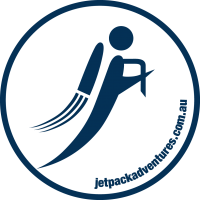No products in the cart.
Safety:
Extensive research and test results helped us develop many safety features and “best practice” operating procedures. Although falling from height or at speed is inherently risky, from our experience falling from the Jetlev Flyer is rare, and platform diving from 10 meters has been widely practiced for over a century with excellent safety records. Central to our safety design is using water as a safety net and enforcing low flight ceilings by restricting hose length.
The jetpack’s 5-point quick-release harness, protective back rest and head support, safety saddle and inherent floatation are just some of the many other safety features.
Inherent stability and effortless control:
Even though the jetpack can generate upwards of 500 lbf (2220 N) of thrust for lift and propulsion, the flight controls are isolated from that thrust and only take a few ounces of effort to adjust.
Simple, intuitive flight controls:
Nozzle angles determine allocation of thrust between lift and propulsion (forward, neutral or reverse); differential nozzle deflection generates yaw moments; and weight shifting from side-to-side generates roll moments.
Flexible supply hose/tether:
A flexible water supply hose delivers power to the jetpack with pressurized water. It also serves as the tether, enforces a flight ceiling, discourages the pilot from flying over land, acts as a stabilizer, dampens vibrations, and maintains forward heading stability of the jetpack in flight.
More general information can be found at the Aerial watersports association

